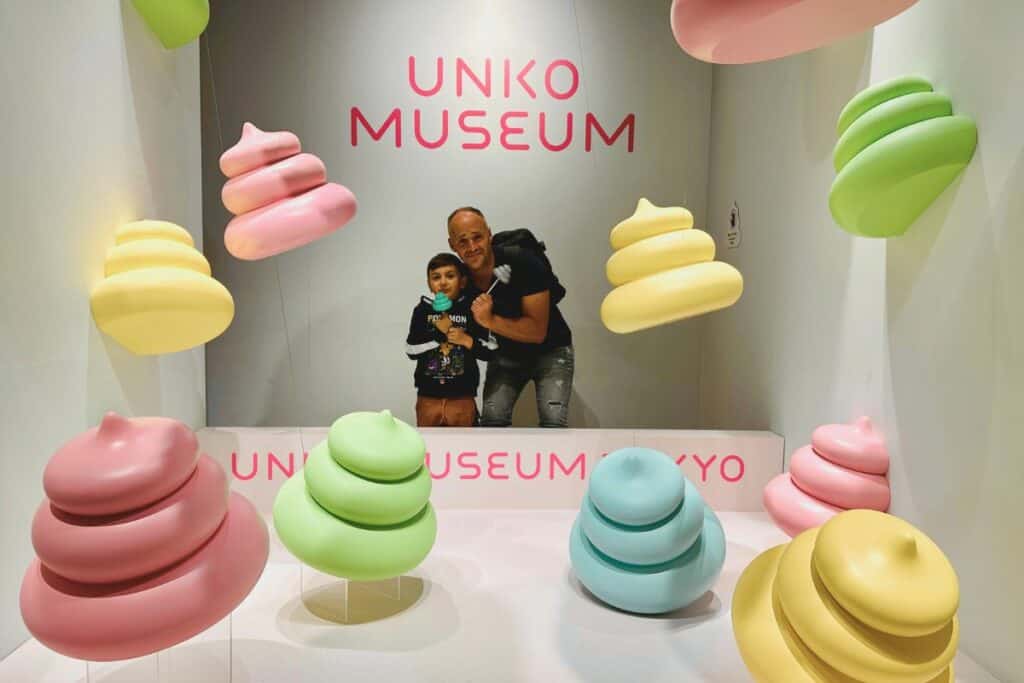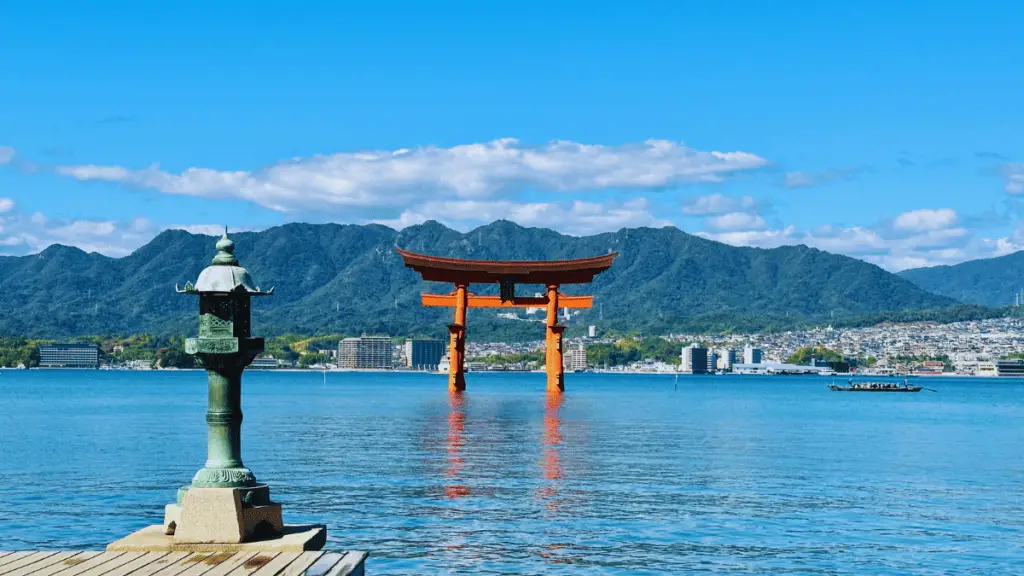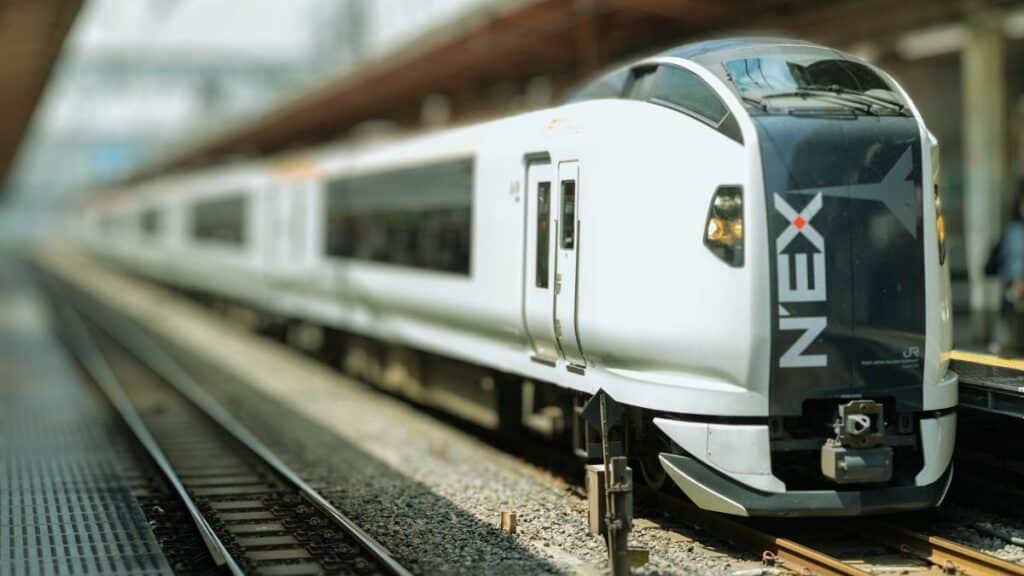Planning a trip to Japan involves careful budgeting to ensure you have enough yen for all your expenses. Knowing how much yen you should bring to Japan is an important part of your planning, but it is also frequently overwhelming. To help you out with this challenging task, I wrote this article covering several examples that can be used as a reference for your planning.
The average cost for a trip to Japan varies widely based on the travel budget. Low budget travel costs around ¥271,000 ($1,700) per person, while medium budget travelers spend about ¥633,000 ($3,900) for more comfort and convenience. High budget travel can easily reach ¥1,452,000 ($9,000).
This guide provides detailed information on accommodation, transportation, flights, activities, and other expenses, with examples for each budget. Additionally, it includes information on how prices vary between low and high seasons.
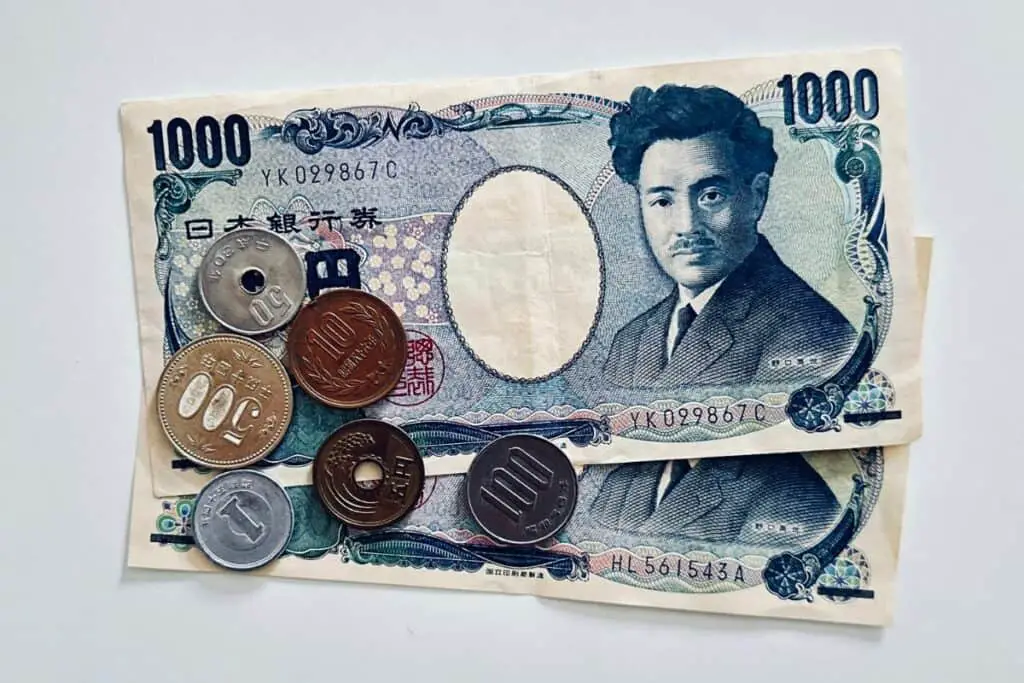
© Ana Costa
Flights
Flights to Japan can vary greatly in cost, depending on your departure location, time of booking, airline, and season. They represent a huge part of your travel budget, so you might want to follow the price trends as soon as you can. Here are some average prices and examples for flights from the US:
- Low Budget: $800 – $1,200 round trip (Economy class, budget airlines, advance booking)
- Examples of Budget Airlines: ANA’s low-cost carrier Vanilla Air, Japan Airlines’ low-cost carrier ZIPAIR, Delta’s basic economy.
- Low Season (Cherry Blossom, Golden Week, Summer, Autumn Foliage, New Year): Prices can drop to around $800.
- High Season (Winter, excluding New Year, and the Rainy Season in June): Prices can increase to around $1,200.
- Medium Budget: $1,200 – $1,900 round trip (Economy class, standard airlines, moderate booking time)
- Examples of Standard Airlines: United Airlines, American Airlines, Delta Airlines.
- Low Season: Prices around $1,200.
- High Season: Prices around $1,900.
- High Budget: $1,900+ round trip (Business/First class, premium airlines, late booking)
- Examples of Premium Airlines: Japan Airlines (JAL), All Nippon Airways (ANA).
- Low Season: Prices start at around $1,900.
- High Season: Prices can go well above $2,500.
You can use Trip.com to search for good flight deals. This website allows to search from all the airports in your country to all the airports in Japan, so you can choose the best price. And if you have flexible dates, it shows you the price day-by-day so you can pick the cheapest one.
Accommodation
Accommodation prices in Japan can range from budget hostels to luxury hotels, with significant variations between low and high seasons. This variety of accommodations means that travelers with different budgets can find lodging options that fit their needs. Here are some typical costs for accommodation:
- Low Budget: ¥3,000 – ¥6,000 per night (Hostels, cheap capsule hotels)
- Low Season: Prices around ¥3,000.
- High Season: Prices around ¥6,000.
- Medium Budget: ¥10,000 – ¥20,000 per night (Mid-range hotels, budget ryokan)
- Low Season: Prices around ¥10,000.
- High Season: Prices around ¥20,000.
- High Budget: ¥30,000+ per night (Luxury hotels, high-end ryokan)
- Low Season: Prices around ¥30,000.
- High Season: Prices can easily exceed ¥50,000.
Transportation
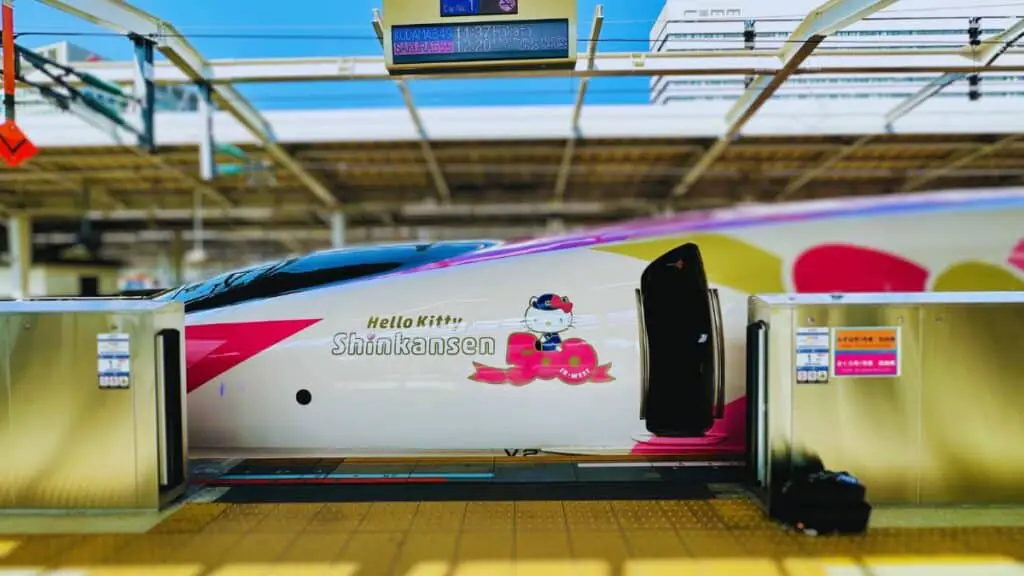
Japan is known for offering various transportation options, catering to different budgets and preferences. Transportation costs will depend on your travel style and distance covered. The Shinkansen (bullet train) is a highlight for any tourist visiting Japan, but it can be pricey. Local trains, subways and buses, however, are more affordable. If you understand the difference between all the transportation options that are offered to you, you can craft a personalized itinerary without spending lots of money.
Hey, check out these recommendations I have for you!
Before going any further, take a look at some of the recommendations I've handpicked for you. I think these are essential items you should have on your trip to Japan. You can check them out and buy them directly from Amazon.
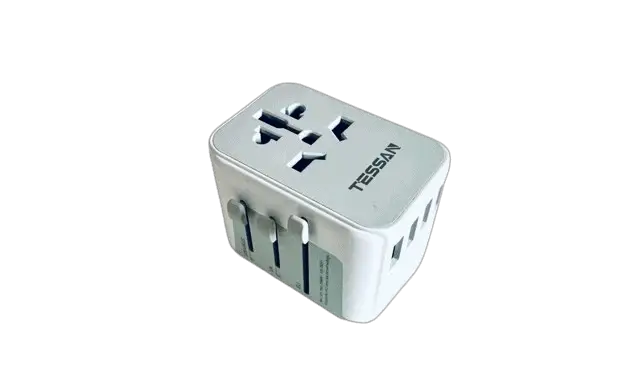
|
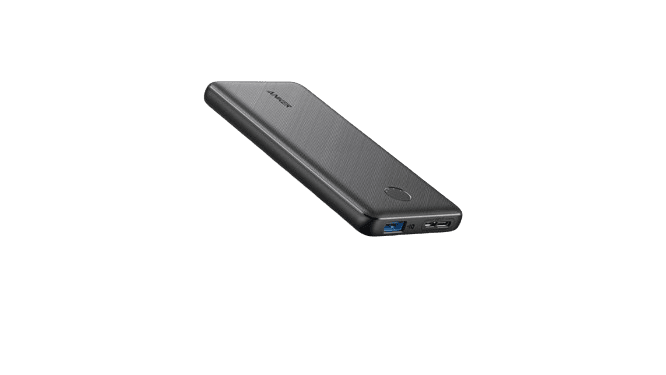
|

|
| A universal travel adapter | A 10,000 mAh power bank | A travel adapter and converter |
- Low Budget: ¥500 – ¥1,000 per day (Local trains, buses, bicycles)
- Medium Budget: ¥2,000 – ¥5,000 per day (JR Pass, regional passes, moderate taxi use)
- High Budget: ¥10,000+ per day (Shinkansen tickets, taxis, car rentals)
- Low Season: Shinkansen and taxi prices are consistent year-round but car rental prices may be lower.
- High Season: Peak travel times can increase demand and prices for car rentals.
Klook.comYou May Also Like:
Jump on Board the Hello Kitty Shinkansen: Your Complete Guide
Hello Kitty Haruka: The Cutest Train Between Osaka and Kyoto
Is Japan’s Shinkansen Really Expensive?
Food
Food in Japan is diverse, delicious, and ranges in price, making it accessible for all types of travelers. Street food, convenience store meals, and fast food are cheap and popular with tourists. Though food costs in Japan can be quite reasonable, there are also plenty of high-end dining options. You should bring enough yen in cash, especially if you want to try some smaller traditional restaurants that don’t take cards.
Dreaming of Japan? Here’s your go-to guide for a great trip.
Download Free Guide
- Low Budget: ¥1,000 – ¥2,500 per day (Convenience store meals, ramen shops, street food)
- Medium Budget: ¥3,000 – ¥6,000 per day (Casual restaurants, izakayas, mid-range dining)
- High Budget: ¥10,000+ per day (Fine dining, kaiseki meals, high-end sushi)
- Low Season: Prices are relatively stable year-round.
- High Season: Some high-end restaurants may have seasonal pricing or special menus.
Activities and Sightseeing
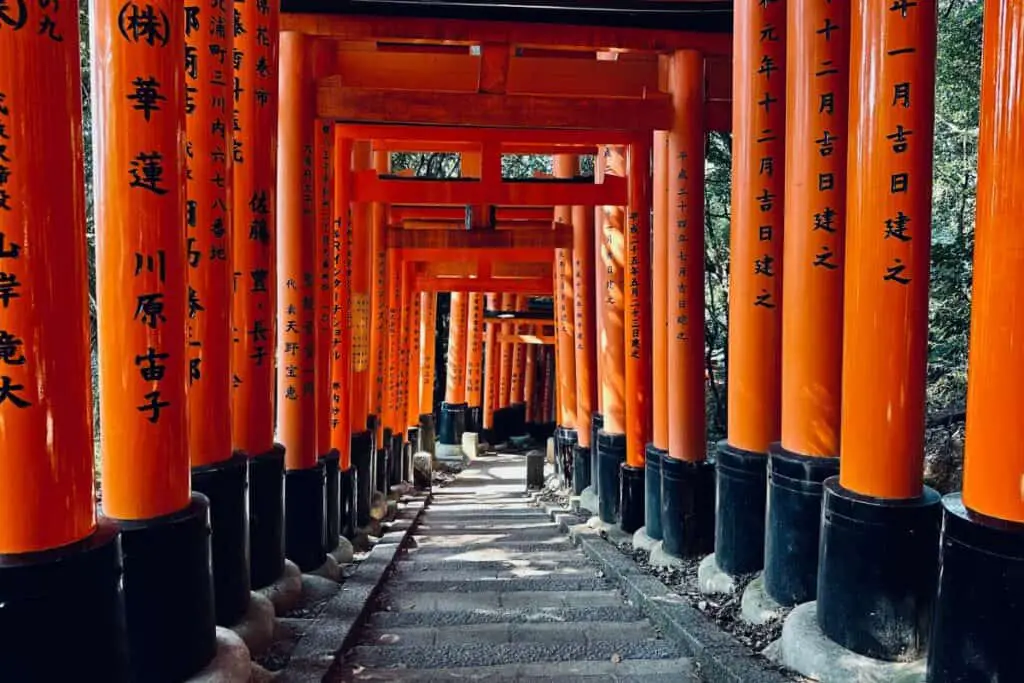
© Ana Costa
Japan offers a wide range of activities for all budgets. Free or low-cost options include visiting public parks, temples, and shrines, like the iconic Fushimi Inari Shrine in Kyoto. Also, most museums and cultural sites charge modest entry fees. However, if you aim at attractions like theme parks (Tokyo Disneyland, Universal Studios Japan) or exclusive experiences like private tours and unique dining experiences, the amount of yen you should bring to Japan is completely different.
- Low Budget: ¥500 – ¥2,000 per day (Free temples, parks, low-cost museums)
- Medium Budget: ¥3,000 – ¥7,000 per day (Paid attractions, guided tours, cultural experiences)
- High Budget: ¥10,000+ per day (Theme parks, private tours, exclusive experiences)
- Low Season: Prices for attractions are stable, but there may be fewer crowds.
- High Season: Expect higher demand and potential price increases during peak tourist times.
Klook.comYou May Also Like:
What to do Around Fushimi Inari Shrine?
Is Nara Worth Visiting?
The Unko Museum in Tokyo: A Poop-Themed Adventure
Miscellaneous Expenses
Additional costs such as souvenirs, sim cards, and emergencies should also be considered. Always plan your budget on the higher side and bring some extra yen to avoid unpleasant surprises.
- Low Budget: ¥500 – ¥1,000 per day
- Medium Budget: ¥2,000 – ¥4,000 per day
- High Budget: ¥5,000+ per day
Example Budgets
Planning a trip to Japan involves budgeting for various expenses to ensure a memorable and stress-free experience. Here are detailed examples across different budget levels to give you a clearer idea of what to expect. Hopefully, these examples will help you budget according to your travel preferences.
Please note that these are only examples and the final prices might vary greatly depending on dates, location, exchange rate, etc.
How Much Yen for Low-Budget Travel
Low-budget travel appeals to backpackers, students, and young travelers who are adventurous and willing to compromise on comfort for the sake of saving money. These travelers often prioritize experiences and cultural immersion over luxury.
Pros: The primary advantage of low-budget travel is the significant cost savings, allowing you to extend your trip or allocate funds to unique experiences like local tours or cultural workshops. Staying in hostels and eating at local eateries can also provide more authentic experiences and opportunities to meet other like-minded travelers.
Cons: The downside of low-budget travel is the potential lack of comfort and convenience. Hostels and budget accommodations may offer limited privacy and amenities. Additionally, low-cost transportation options can be less convenient and more time-consuming, which might limit your ability to see as much as you would with a more flexible budget.
- Flights: $900 (¥145,000)
- Accommodation: ¥4,000 per night x 14 nights = ¥56,000
- Transportation: ¥1,000 per day x 14 days = ¥14,000
- Food: ¥2,000 per day x 14 days = ¥28,000
- Activities: ¥1,000 per day x 14 days = ¥14,000
- Miscellaneous: ¥1,000 per day x 14 days = ¥14,000
- Total: ¥271,000 (approx. $1,700)
How Much Yen for Medium-Budget Travel
Medium-budget travel is perfect for families, couples, and solo travelers who look for a balance between comfort and expense. These travelers usually search for mid-range accommodations and are ready to spend a bit more for convenience and comfort.
Get all the cool spots and tips for a fun trip to Japan. It's free!
Get My Japan Guide
Pros: Medium-budget travel allows for a comfortable experience without spending too much. You can stay in well-rated hotels, enjoy a mix of local and international cuisine, and have the flexibility to use convenient transportation options like the JR Pass. This balance ensures a pleasant trip with good amenities and accessibility.
Cons: While medium-budget travel offers a good balance, it may still require careful planning to avoid unnecessary expenses. Some mid-range accommodations and restaurants can be hit or miss, and you might not have access to some luxury amenities available in higher-budget options.
- Flights: $1,500 (¥241,000)
- Accommodation: ¥15,000 per night x 14 nights = ¥210,000
- Transportation: ¥3,000 per day x 14 days = ¥42,000
- Food: ¥4,000 per day x 14 days = ¥56,000
- Activities: ¥4,000 per day x 14 days = ¥56,000
- Miscellaneous: ¥2,000 per day x 14 days = ¥28,000
- Total: ¥633,000 (approx. $3,900)
How Much Yen for High-Budget Travel
High-budget travel is ideal for luxury tourists, business travelers, and those celebrating special occasions. These travelers prioritize comfort, convenience, and exclusive experiences, often choosing premium services and accommodations.
Pros: High-budget travel offers the ultimate in comfort and convenience. You can stay in top-tier hotels, enjoy fine dining experiences, and use premium transportation options. This type of travel frequently includes access to exclusive tours and activities, ensuring a memorable and hassle-free experience.
Cons: The primary disadvantage of high-budget travel is the significant cost. This type of travel can quickly become expensive, and not everyone may find the additional luxury worth the extra expense. Additionally, staying in high-end accommodations may limit your interaction with local culture and other travelers, as luxury environments can sometimes be more isolating.
- Flights: $2,500 (¥402,000)
- Accommodation: ¥40,000 per night x 14 nights = ¥560,000
- Transportation: ¥10,000 per day x 14 days = ¥140,000
- Food: ¥10,000 per day x 14 days = ¥140,000
- Activities: ¥10,000 per day x 14 days = ¥140,000
- Miscellaneous: ¥5,000 per day x 14 days = ¥70,000
- Total: ¥1,452,000 (approx. $9,000)
Pro Tips for Budgeting
- Use a Suica/Pasmo Card: These IC cards are convenient for public transportation and can be used for small purchases at convenience stores and vending machines.
- Eat Like a Local: Convenience stores and budget-friendly chain restaurants like Sukiya or Yoshinoya offer affordable and tasty meals.
- Free Attractions: Take advantage of free attractions such as parks, temples, and festivals.
- Discount Passes: Look for regional travel passes or discount tickets for multiple attractions.
Conclusion
The amount of yen you should bring to Japan depends on your travel style and budget. By planning ahead and understanding the costs associated with flights, accommodation, transportation, food, activities, and miscellaneous expenses, you can create a realistic budget that ensures a smooth and enjoyable trip. Japan has a wide range of options to suit every traveler, no matter if you’re traveling on a tight budget or looking for luxury.

